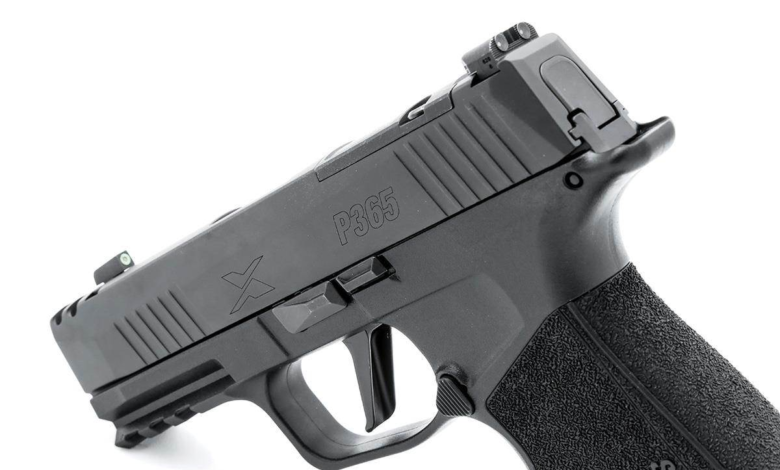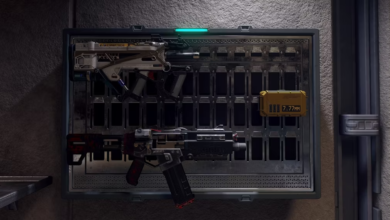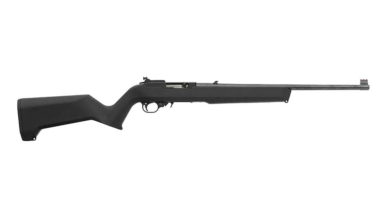Night Sights: The Key to Fighting the Night
Night sights make your gun more effective when lights are low.

Since criminals obviously prefer to avoid apprehension, it should come as no surprise that criminal activity spikes at night. The cloak of darkness provides fewer witnesses and makes it more difficult for their intended victims to detect their approach.
But darkness isn’t confined to night. Consider being inside a building where the lights are off. If you carry a gun but haven’t practiced with it in a low-light environment, you’re way behind the curve.
Training in diminished light will reveal shortcomings not only in your shooting skills but also in your equipment. The need for a weapon- mounted or handheld light—preferably both—becomes clear. After all, how can you shoot what you haven’t identified as a deadly threat? And if you’ve ever tried to align black sights on a silhouette target in low-light conditions, you probably wished your handgun had nights sights.
Many night sights contain tritium, a radioactive material that emits electrons that interact with a phosphor gas, generating low-intensity light which is used to illuminate objects that need to be seen in the dark, such as emergency exit signs, wristwatches, or, in our case, gun sights. Night sights provide the shooter with invaluable aiming information, without disrupting night vision.
When I became a police officer in 1997, my duty gun was equipped with night sights. The rationale was clear: A cop needs to be able to aim his pistol effectively, regardless of lighting conditions. The same rings true for a private citizen. Why wouldn’t you want the sights on your defensive handgun to glow in the dark?
This seems like a no-brainer to me, but not everyone agrees. Some prefer fiber-optic sights, which gather ambient light to become more visible than traditional plastic or metal handgun sights. Fiber-optic sights are great for daytime shooting, but if there’s no ambient light, they are as useless as traditional sights.
Fiber-optic sights also tend to be rather fragile as compared to other handgun sights. On several occasions, I’ve seen a fiber-optic rod become dislodged from a front sight post. Looking for a bright-colored dot and finding a post with a hole in it can’t be a good feeling in competition, much less in a self-defense situation.
I’ve heard the case made that if it’s too dark to align the sights on your handgun, it’s too dark to identify a deadly threat, without a light. Since you’ll need a flashlight anyway and that light can illuminate your sights, what good are night sights?
While it’s true night sights are no substitute for white light, they are an excellent supplement to it. And there could certainly be a situation where an assailant whom you’ve confirmed poses a deadly threat is wearing dark clothing or moves slightly and is suddenly veiled in shadows, making it difficult to align traditional handgun sights. Maybe he’s shooting and you can see the blast from his muzzle but can’t align your sights.
In such case, you wouldn’t be relying on night sights to verify that deadly force was required, but rather to ensure such force is delivered accurately by seeing and subsequently aligning the sights.
Oh, by the way, night sights still work during the day. In fact, many night sights are actually day/night sights and have bright-colored outlines surrounding the tritium vials. In some cases, luminescent paint is used, which contains a phosphor that emits light for a period after being exposed to an energy source, such as sunlight.
Similarly, night sights are compatible with light. The fact that you have a weapon-mounted light or a handheld flashlight does not suddenly render night sights useless. The light may wash out the tritium, but it will reveal the outline of the sights, which works just as well for aiming.
With tritium sights, the darker the environment, the brighter they appear. While that’s the whole point of having night sights, some worry that the glowing vials will compromise your position. This is a ridiculous notion, as the only way anyone would see the glowing dots is if they were directly behind you, in which case you have much bigger problems.
I’ve heard naysayers claim night sights are distracting, but the only time I have found this to be the case is when you have different colors tritium vials on the front and rear. This was the trend a few years ago. The reasoning behind differentiating the front and rear sight color was to eliminate the possibility of having your front sight so far left or right that it is mistaken for one of the rear sight dots.
For this to occur, especially considering the width of the rear sight notch, your gun would have to be positioned at an extreme angle. If you have even a halfway decent grip and presentation, mistaking your front and rear sight is a non-issue. Having multicolored tritium vials semes to a solution looking for a problem.
Some manufacturers like Trijicon and TruGlo are making night sights that combine tritium and fiber optics, giving the shooter the best of both worlds—sights that are highly visible day and night and in essentially every lighting condition. These sights also encapsulate the fiber optic and tritium vials to prevent them from being broken or dislodged.
Night sights typically are an easy DIY swap for stock handgun sights, with no gunsmithing required. They offer a convenient, battery-free sighting system, enabling you to aim your handgun regardless of lighting conditions. And unlike a red dot or weapon-mounted light may, adding night sights won’t require you to get a new holster.
As the good guy, you don’t get to pick the conditions under which you may have to defend yourself. Therefore, you must be prepared regardless of such variables as lighting. Obviously, having a light source on your gun or in your hand is critically important to be able to confirm a deadly threat exists before pressing your trigger in response.
Night sights are another tool that can be used to give you an edge in a darkened environment. They are not a substitute for a light. However, for less than $150 and a few minutes of your time, you can upgrade your carry gun’s sights—making them usable 24/7.





